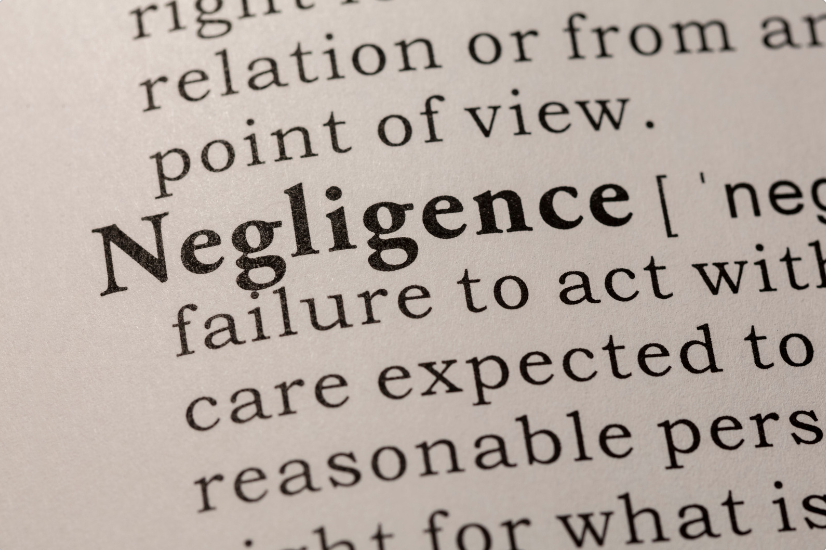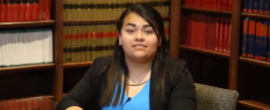Expanding Definitions: Comparative Negligence and the Open and Obvious Doctrine
Written by Cooper & Friedman PLLC on September 26, 2023

In a previous blog, “Slip and Fall Terminology and What You Should Know About Your Case,” we discussed six factors and legal terms that need to be considered when deciding whether or not to take your case to court. Two of those factors – comparative negligence and the open and obvious doctrine – are much more complicated than what we could fit into an overview, so we’re here to bring them back into the spotlight for an in-depth definition of what they really mean and how they’re connected.
Comparative Negligence
Comparative negligence is a legal doctrine that states a victim can recover partial damages should they be responsible to a certain degree for the injuries sustained. Due to inattentiveness, carelessness, or disregard of property lines, comparative negligence takes into account the amount of fault from each party and applies it to the final settlement, which means that this doctrine can be utilized by both the plaintiff and the defense in a case to either:
- Receive compensation in a case where the plaintiff was partly at fault; or
- Lower the compensation that the defendant has to pay.
Pure vs. Modified Comparative Negligence
Comparative negligence is applied in one of two ways, depending on the state the injury occurs in: pure comparative negligence and modified comparative negligence.
States that apply pure comparative negligence rules allow the plaintiff to pursue compensation regardless of what percentage of fault is delegated to each party. Kentucky abides by pure comparative negligence rules, meaning that unless the plaintiff is found 100% at fault for their injuries, they can seek compensation, even if it’s only 1%.
Other states follow modified comparative negligence, which limits a plaintiff’s ability to seek damages after they are found responsible for a certain percentage of fault. Within this rule, there are two deviations: the 50% rule and the 51% rule. Some states prohibit plaintiffs from seeking damages if found 50% at fault or more, and other states prohibit them from seeking damages if they are found 51% at fault or more.
An important detail to note, however, is that there are currently 4 states that follow contributory negligence, which is not the same thing as comparative negligence; in fact, it’s the antithesis of comparative negligence. Contributory negligence states that the plaintiff cannot collect any damages at all if they share fault in the injury – even if they were only 1% responsible.
The Open and Obvious Doctrine
The open and obvious doctrine is used exclusively for defensive purposes. It states that “if the hazard or condition would have been open and obvious to a reasonable person, then the landowner is not liable (or may be less liable) for failing to fix the condition or warn the person who was injured.” The wording of this doctrine can make cases murky, as it seems to negate the owner’s responsibility of dangers on their property.
This is not the case! The nature of comparative negligence still makes it possible to prove that the defendant was liable for at least part of the plaintiff’s injuries, even if the plaintiff is responsible for a percentage of it. Sometimes, despite the danger being open and obvious, the defendant might still have breached the duty of care relative to the danger, and when combined with proof of the defendant’s active negligence, the open and obvious doctrine can become a non-factor.
Reminder: Active negligence can include situations where:
- The owner knew about the hazard but failed to address it completely.
- The owner knew about the hazard and addressed it, but in an inadequate manner.
- The owner caused the hazard that led to injury themselves.
- The owner did not know about the hazard but, with reasonable care, should have.
Let Cooper and Friedman Help
These two doctrines are closely intertwined because they’re often used collectively by the defense or in contest with each other. Understanding the details of negligence cases can be difficult, but can also affect the success of your case in court. If you or someone you love has been injured in a negligence or slip and fall case in the State of Kentucky and are in need of an experienced injury attorney, give the lawyers at the Cooper & Friedman law firm a call. The attorneys at Cooper and Friedman PLLC have over 50 years of combined experience defending the rights of slip and fall victims. Contact us with questions you might have or schedule a free case consultation with an attorney by calling 502-459-7555 today.

